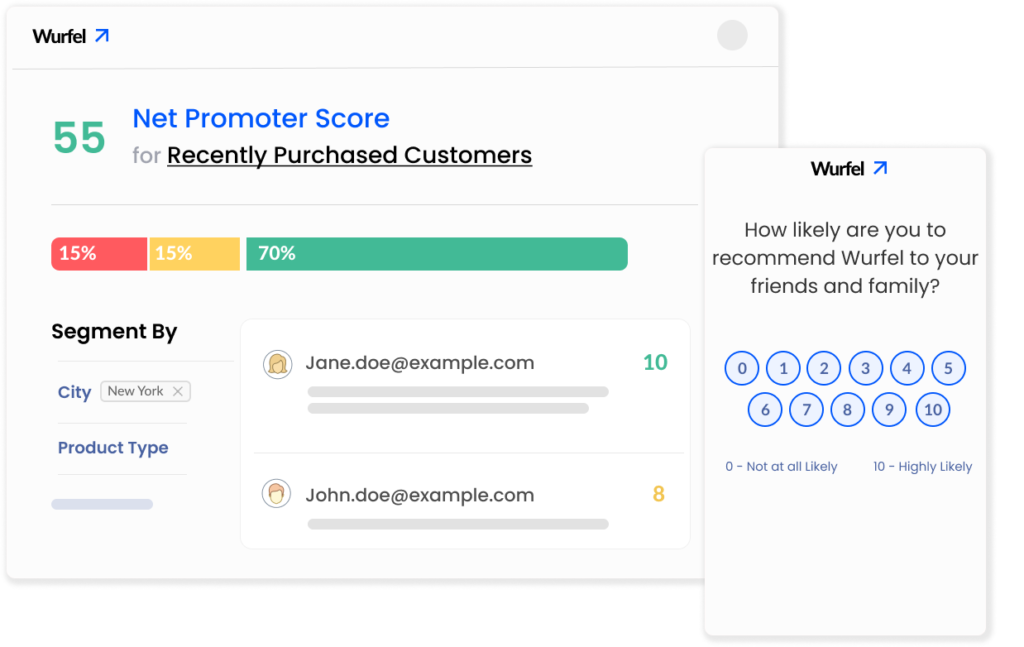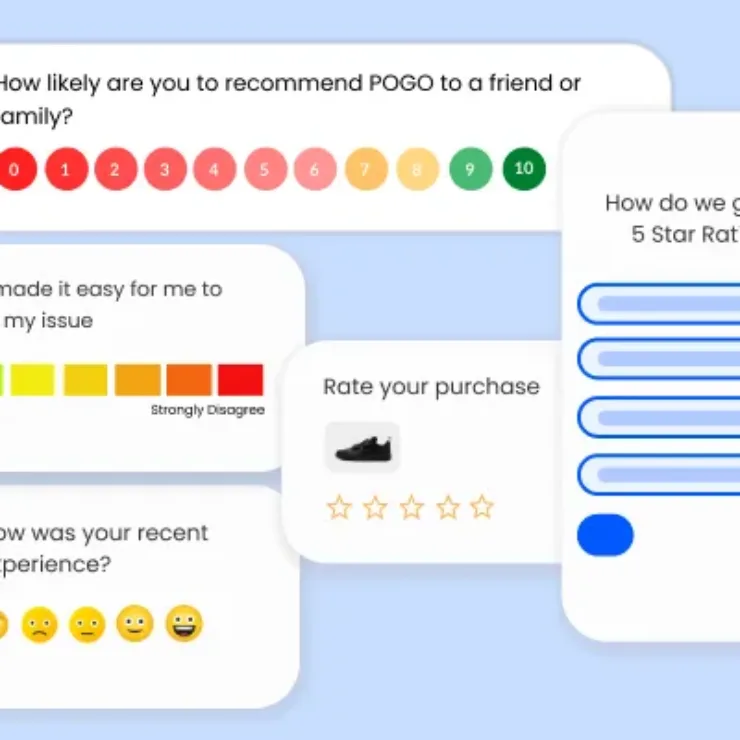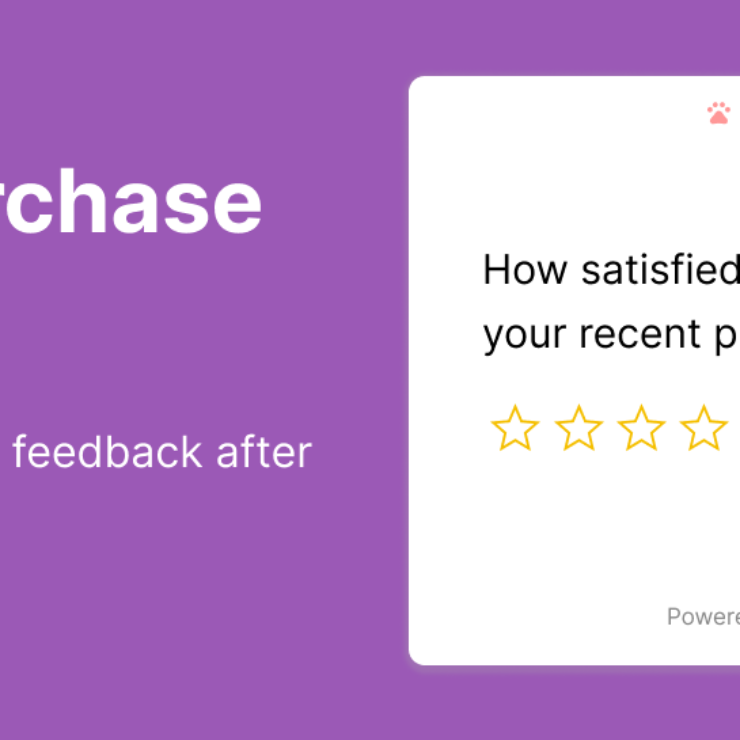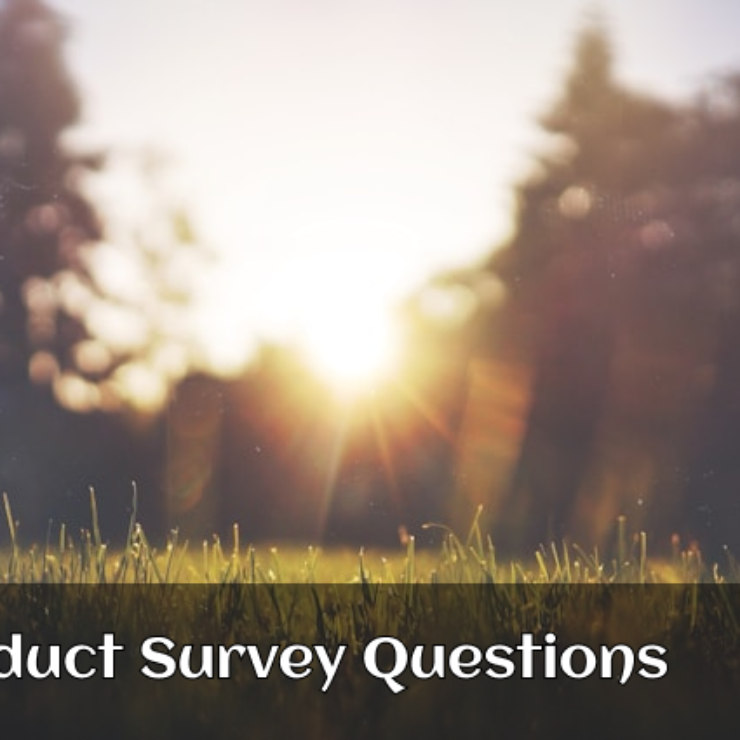Last updated on:
Table of Contents
Summary
Businesses exist to serve their customers by providing them with products or services. Satisfied customers are the most valuable asset any business can have. When measuring customer satisfaction or customer experience, businesses primarily choose 2 top CX metrics – CSAT vs NPS. CX is short hand for Customer Experience.
This post answers all the questions that relate to the meaning of the metrics, uses, and best practices.
TL;DR - CSAT vs NPS
NPS
- NPS is a measure of customer loyalty. A typical NPS survey question looks like this – How likely are you to recommend [Product name or Service Name or Brand Name] to your Friends, Family, or Colleagues? The scale ranges from 0 – 10. 0 is Not at all likely and 10 is Highly likely.
- Customers rating between 0 – 6 are called detractors, 7 and 8 are passives and 9 and 10 are promoters. Naturally, detractors are not happy about your business. And promoters are your brand advocates. Passives are in between – neither very happy nor very unhappy.
- The goal of customer experience initiatives at a business should be to move the detractors and passives to promoters. Asking an open-ended question after the first question helps capture their pain points.
- In essence, NPS helps you create more brand advocates and can reduce friction for your customers in the entire customer journey.
- NPS can be a good indicator of long-term business growth and sustainability. NPS can be sent to the customers after a major touch point or periodically (say quarterly) to measure satisfaction levels.
CSAT
- CSAT is a customer satisfaction metric, which measures the satisfaction of a customer at a specific touch-point. Say after customer purchases a product, tries out a feature, or deals with your contact center.
- Typically CSAT is a 5-point scale ranging from 1 – 5. 1 and 2 are dissatisfied or unhappy. 3 are Neutral. 4 and 5 are Satisfied or Happy.
- As mentioned before, CSAT can be sent after a transaction is done. So the customer can rate her experience for that particular transaction or touch-point.
- CSAT survey can also have an open-ended question that follows the scale question. The open-ended question can be used to get more details from the customer on how to improve that particular touch-point.
- Can help you reduce friction at various touch-points of the customer journey
Quick Comparison – CSAT vs NPS
- To recap, NPS is a feedback on your company or brand as perceived by your customers. It is broad and measures brand loyalty in the long term. It should be done every quarter or at a specified frequency across your customer base. Because it is neutral and does not refer to any particular transaction, NPS is often broad and captures the overall sentiment of your customer. NPS is the score that you should track over the long term. In contrast, CSAT is transactional. It is used after customer is exposed to a specific touchpoint – say after placing an order, using a feature, or finishing a transaction. The question focussed on that particular transaction and aims at reducing friction in that context.
- Can you use NPS and CSAT interchangeably? Yes you can. But ideally, you should not. They are meant to complement each other. You can send CSAT surveys after touch-points and do NPS across the customer base periodically. Say every quarter. That way you will have both generic feedback about your customer loyalty in the form of NPS and specific CSAT scores at various touch-points.,

Want to start measuring your NPS or CSAT in 10 minutes?
Affiniv is the simplest way to measure customer metrics like NPS, CSAT and act upon your customer feedback.
What's the meaning of CX
We touched upon CX briefly in the summary. So let us pause a bit and explain what CX really means.
CX is a standard industry team, which refers to the customer experience. Customer experience refers to how the customer experiences your product, services or brand in general over the customer journey.
The customer experience for a business is measured primarily using 3 metrics – NPS, CSAT, and CES.
Let us dive in and find more details about each of them.
What is NPS and how to use it?
NPS or Net Promoter Score is a survey which was originated at Bain & Co to measure the customer satisfaction level.
Since then NPS has been adopted as the key loyalty metric at large corporations as well as businesses of any size.
The key thing that NPS aims to measure is – how the customer feels about your overall business. This is as opposed to “transactional or short-term measures” of customer satisfaction metrics such as CSAT as we will see shortly.
NPS Question
NPS question goes something like this –
How likely are you to recommend [Your Business/Product/Brand] to your friends, family, or colleagues?
The response option is an 11-point scale with scores ranging from 0 to 10.

Promoters – Users scoring 9 or 10 are called promoters. These users are very happy about your business. They are the advocates and most likely they will recommend other customers to your business – either via word-of-mouth or by talking positively about your brand on social platforms.
Passives – Users giving a score of 7 or 8 are called passives. Generally speaking, these customers are not very happy about your business, but they are not very unhappy as well. If no alternative is available for your product or service, these users will continue staying with you. But if a similar service with low switching cost comes along, they may jump ship.
Detractors – Users giving a score of 0 to 6 are called detractors. These users are unhappy about your business. They are most likely to leave as soon as they can find an alternative. Maybe they are already actively searching for an alternative to switch.
As it’s obvious, your goal as a business is to maximize the number of promoters.
Additional question
Ok, now that you have set up the main question to classify your users, it is time to learn more about why did they choose the rating. That is the role of the additional question. You can choose to ask any number of additional questions but there are 2 general rules.
1. Keep the number of additional questions to a maximum of 5 – 7. The more the number of questions, the lesser will be the completion rate. Completion rate means out of say 100 users answer the first question of the survey. How many of them actually complete the full survey?
If you are using an NPS tool like Affiniv, the first question response gets saved even if the additional questions are not answered.
2. Ask one open-ended question asking the user why she chose that rating. This is very important to understand why your user is satisfied or dissatisfied with your business. This information will help pinpoint the pain areas, which will then help you drive the score up by solving these pain areas.

The NPS main question and the additional questions combined together should give you a good understanding of the customer satisfaction level and the reason for that.
Using Affiniv NPS Software, you can very easily choose from multiple types of questions like multi-choice, scale, smiley, long answer questions and more.
How to calculate NPS
Now that your users have chosen their response, it is time to calculate the NPS. (NPS or Net Promoter Score has already the word “Score” in it. So the score is referred to as NPS and not NPS score! )
Net Promoter Score = (Percentage of Promoters – Percentage of Detractors).
Say you have 100 responses. Out of them, 60 are Promoters (score of either 9 or 10). 30 are Passives (score of either 7 or 8). And 10 are Detractors (score between 0 and 6). In the above example: Percentage Promoters = 60% Percentage Passives = 30% Percentage Detractors = 10% The NPS is (60 – 10) = 50.

What is a good NPS?
NPS ranges between -100 to 100.
Inventors of NPS system (Consulting firm Bain & Co.) suggest the following –
– NPS Less than 0 (Negative NPS) – Not good (More detractors than promoters)
– NPS > 0 – Good
– NPS > 25 – Favorable
– NPS > 50 – Excellent
– NPS > 80 – World class
What is CSAT and how to use?
CSAT, as the name suggests, stands for Customer SATisfaction score. This is the most versatile score, which can be used in many contexts. But generally, CSAT is used for “transactional” or “touch-point” surveys.
Here are some examples of where you may want to use CSAT survey –
- After a successful transaction by your customer
- After customer places an order on your website
- After your user uses a particular feature of your product
- After a customer help desk ticket is resolved by your contact centre agent
CSAT Question
Now that we know when to ask CSAT question, let us turn our attention to the CSAT question itself.
CSAT question can be a 5-point scale, ranging from 1 to 5, or less commonly a 3-point scale ranging from 1 to 3.
CSAT question is versatile and can have multiple variants –
Question: Please rate your experience with your recent [order/transaction/feature use]
Scale 1 – 5.
1 – Very Poor
5 – Excellent
Question: Please rate your recent experience with our support desk
Depending on the score selection, your users can be classified into 3 buckets as follows –
Dissatisfied: Score of 1 & 2. These customers did not like their recent interaction or transaction with your business. They may or may not be the detractors of your brand, but they did not like this particular experience.
Neutral: Score of 3. They were not dissatisfied not very satisfied with the recent transaction or interaction with your business
Satisfied: 4 & 5. These customers were happy with their recent interaction. But it may be a mistake to think that all of the customers in this bucket are your brand promoters or they like your business overall. As your CSAT is tied to a particular context or transaction, it simply means that they found this transaction or interaction or feature satisfying.
What is CES
CES stands for Customer Effort Score. It gained steam when Gartner published an article popularizing the concept – “Effort is the strongest driver to customer loyalty“.
In simple language, it means – how easy it was for your customer to use a particular feature or carry out a particular transaction or place an order etc.
Some CX industry folks classify it as a separate kind of survey, while others treat it more like a special case of CSAT.
Irrespective of the point of view, the question and survey methodology remains the same in case of CES as in the case of CSAT.
CES is also a 5-point scale, with the main question as follows.
CES Question: How easy was it for you to [use feature X/place order on website/do Y transaction]?
1 – Very hard
5 – Very easy
We will classify CES as a special case of CSAT survey for the purpose of this post.
CSAT vs NPS - the key differences
Transactional Survey vs Customer Loyalty Survey
CSAT surveys are meant to be transactional and focused on a particular context. Say for example, you can send CSAT survey after a purchase, use of a feature, after contact with your support desk, or after customer carries out a transaction.
On the other hand, NPS surveys are not tied to a particular context. They are meant to the broad and are a true measure of customer loyalty. As the NPS question is worded in a way which is meant to be about the overall business, the score indicates the customer perception of your business.
Sometimes context is great. And sometimes Neutrality
NPS is contextless. That is it’s biggest strength and it’s weakness. CSAT score with a tie-in to a specific touch-point gives you a score to benchmark and improve that particular touch-point. NPS does not exactly tell you which processes or product features need your attention unless captured in the follow-on questions.
Recency vs Long-term
Due to the context-bound nature of the CSAT, it has a recency bias. When asked about how was the experience with recent transaction, the customer chooses a rating based on how did the recent transaction go. A good rating here should not be considered a sign of loyalty towards your business. And the opposite is also true. One bad experience with a recent transaction does not make a customer a detractor of the brand and start looking to switch.
On the other hand, the NPS aims to measure the brand-loyalty as opposed to a recent transaction. Having said that, please keep in mind that recent happy events have more impact on the NPS and vice versa.
NPS generally covers all customers, CSAT does not
CSAT, because of it’s very nature is sent to the recently transacting customers or the users who have used a certain feature recently. But a good NPS program targets the entire customer base.
The broader coverage makes the NPS a representative of customer loyalty for the whole business.
CSAT vs NPS or CSAT + NPS: How to use NPS and CSAT together?
In an ideal scenario, you should use NPS and CSAT together. It is not really one vs the other. Let me explain why.
CSAT is great at collecting feedback across multiple customer touchpoints. Say when the customer uses a feature, places an order, contacts the help desk, makes a transaction, visits a store, etc. Understanding how well these touch-points are working for customer gives you enough ideas to remove any friction in the product or process.
A combination of these touch-points gives the customer a good idea of how to perceive your business or brand as a whole. NPS is great at measuring this overall perception.
So you should do touch-point CSAT surveys whenever you can and then do NPS survey across your customer base periodically, say quarterly.
Can I replace NPS survey with CSAT?
Some businesses prefer the CSAT scale of 1 – 5 a little more convenient than 0 – 10 scale of NPS. Maybe because 1 – 5 scale is easily embeddable in the app or tablet. With a modern survey tool like Affiniv, you should not have that issue.
But if you want to do the same, you can very well go with a CSAT survey. When you do this, do not forget to change the main question appropriately.
If you want to understand the voice of your customer and benchmark against your past scores, it does not really matter, if you do CSAT survey in a context-free manner. Do not tie the question to any recent transaction and ask something like –
Neutral CSAT question – How happy are you dealing with [business/product/brand]
1 – Not happy at all
2 – Extremely Happy
Cons: The downside to this approach is that the score you get from this survey CAN NOT be benchmarked against your industry average. Some businesses try to benchmark themselves with a CSAT score, but comparing your CSAT score to the industry average NPS is – well at the risk of sounding cliched – comparing apples to oranges 🙂
So, compare your past CSAT scores against future ones and keep improving based on the feedbacks received. But do not try to benchmark yourself against your industry NPS.
Check this post to find out what is a good NPS for your industry.
Final Recommendation on CSAT vs NPS Debate
Ok, it is time for conclusion and final recommendation.
It’s not really CSAT vs NPS when it comes to measuring and acting upon your customer experience. Both these metrics have their own usefulness.
Use CSAT for your customer touch-points like when customer contacts your help desk, uses a product feature, purchases a product etc. Keep in mind that the CSAT you get is tied to the context.
Ask the CAST question tied to a context. Examples
– Based on your recent purchase…
– or Based on your recent use of this feature …..
– or Based on your interaction with our support agent ….
Set one or multiple follow-on questions including one descriptive question.
Analyze the response to the follow-on question, to understand what issue needs your attention.
Keep fixing the top issues and keep improving your CSAT.
Use NPS to measure the satisfaction and long term loyalty level of your customers. Keep the question context-free – how likely are you to recommend [product/brand/business] to your friends, family or colleagues.
Use follow-on questions to identify what are the top things that you need to fix to convert your detractors and passives into promoters.
Keep measuring and improving your score month on month and quarter on quarter. Also, keep an eye on your industry benchmark to see where you stand and try aiming for the best (not just the average)!

Want to start measuring your NPS or CSAT in 10 minutes?
Affiniv is the simplest way to measure customer metrics like NPS, CSAT and act upon your customer feedback.




